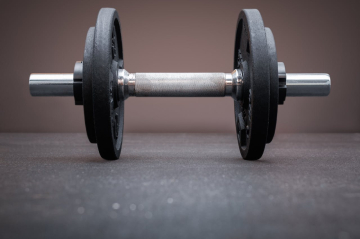Cycling is a fun and versatile physical activity that can be a powerful tool for weight loss when combined with a balanced diet and healthy lifestyle habits. In addition to being an excellent aerobic exercise, it improves cardiovascular endurance, strengthens muscles, helps reduce stress and improves mental health. In this article, we will explore how cycling contributes to weight loss, strategies to maximize its benefits and some practical tips to stay motivated.
Benefits of Cycling for Weight Loss
1. Burn Calories and Body Fat
Cycling is an aerobic exercise that increases heart rate and promotes calorie burning. The amount of calories burned depends on factors such as pedaling intensity, duration of exercise, and the cyclist's body weight. Pedaling at a moderate intensity can burn approximately 300-600 calories per hour, while a more demanding workout can exceed 800 calories per hour.
An additional benefit of cycling is that the body continues to burn calories even after the exercise has finished, especially if high-intensity interval training (HIIT) has been performed. In addition, as it is a sustainable activity over time, it can be easily integrated into the daily routine.
2. Low Joint Impact and Greater Safety
Unlike activities such as running, cycling is low-impact, meaning it puts less stress on your joints. This makes it an ideal choice for people with knee, hip or ankle problems. Plus, as it's an exercise that can be done on a stationary bike or outdoors, it allows for greater flexibility to adapt to weather conditions and personal preferences.
For those looking for a form of exercise with a lower risk of injury, cycling is an excellent alternative, as it avoids repetitive impact on the joints and promotes fluid, natural movement.
3. Increased Metabolism and Burning of Accumulated Fat
Regular cycling can increase your basal metabolic rate, making it easier to burn calories even at rest. Additionally, high-intensity interval training on a bike can further boost your metabolism and promote greater fat loss. Combining cycling with a balanced diet can help reduce belly fat and improve body composition effectively.
Metabolism is also aided by the development of muscle mass, as muscles burn more calories at rest than body fat. This means that cycling not only helps you lose weight, but also improves your overall body composition.
4. Muscle Strengthening and Resistance
Cycling not only helps you lose fat, but also tones and strengthens the muscles in your legs, glutes, and abdomen. A higher percentage of muscle mass contributes to a more efficient metabolism, which helps you burn more calories throughout the day. Additionally, pedaling on inclines or using higher resistance on a stationary bike boosts muscle development and improves overall body endurance.
Strategies for Losing Weight with Cycling
1. Increase Intensity Gradually
Increasing speed and resistance while pedaling increases energy expenditure. Incorporating high-intensity interval training (HIIT) sessions, which alternate periods of high intensity with active rests, can be particularly effective for burning fat and improving cardiovascular capacity.
2. Endurance and Long Distance Training
Extending the length of your cycling sessions helps build endurance and increases calorie burn. Starting with 30-minute sessions and gradually increasing the time is a good strategy to avoid injuries and improve training efficiency. Long-distance routes can also improve mental and physical endurance.
3. Combination with Strength Exercises
Combining cycling with strength exercises, such as squats, lunges, or weight training, can boost fat loss and muscle building. Strong muscles improve cycling performance and boost metabolism. Performing resistance band workouts or bodyweight exercises can also be beneficial.
4. Cycling on Different Terrains and Modalities
Alternating between road, mountain and indoor cycling (spinning) can provide variety and different challenges, keeping motivation high and avoiding plateaus. Climbs, dirt roads and resistance-based stationary bike workouts all help improve performance and increase calorie expenditure.
Nutritional Tips to Accompany Cycling
- Maintain a Controlled Calorie Deficit
To lose weight, it is essential to consume fewer calories than you burn. However, the caloric deficit must be moderate to avoid loss of muscle mass and lack of energy. - Consume Enough Protein and Quality Carbohydrates
Protein helps repair and build muscle tissue. Include lean protein sources like chicken, fish, eggs, legumes, and low-fat dairy products. Opt for complex carbohydrates like oatmeal, brown rice, quinoa, and fruits to keep your energy levels stable. - Hydration and Recovery
Drinking enough water before, during and after exercise is essential to maintaining optimal performance. Including electrolytes and minerals can help with prolonged workouts.
Conclusion
Cycling is an accessible and effective activity for those looking to lose weight in a healthy way. By combining pedaling sessions with proper nutrition, sufficient rest, and the guidance of professionals, significant results can be achieved. The key is consistency and adapting the exercise program to personal abilities and goals. With discipline and patience, cycling can become a transformative tool for overall health and well-being.
Sources
https://www.apollohospitals.com/es/health-library/biking-for-weight-loss-a-few-effective-strategies/
https://chuzefitness.com/es/blog/is-cycling-good-for-weight-loss/
https://www.youtube.com/watch?v=hgQ4sCftmYM
https://www.hubsports.mx/puedo-bajar-de-peso-practicando-ciclismo






